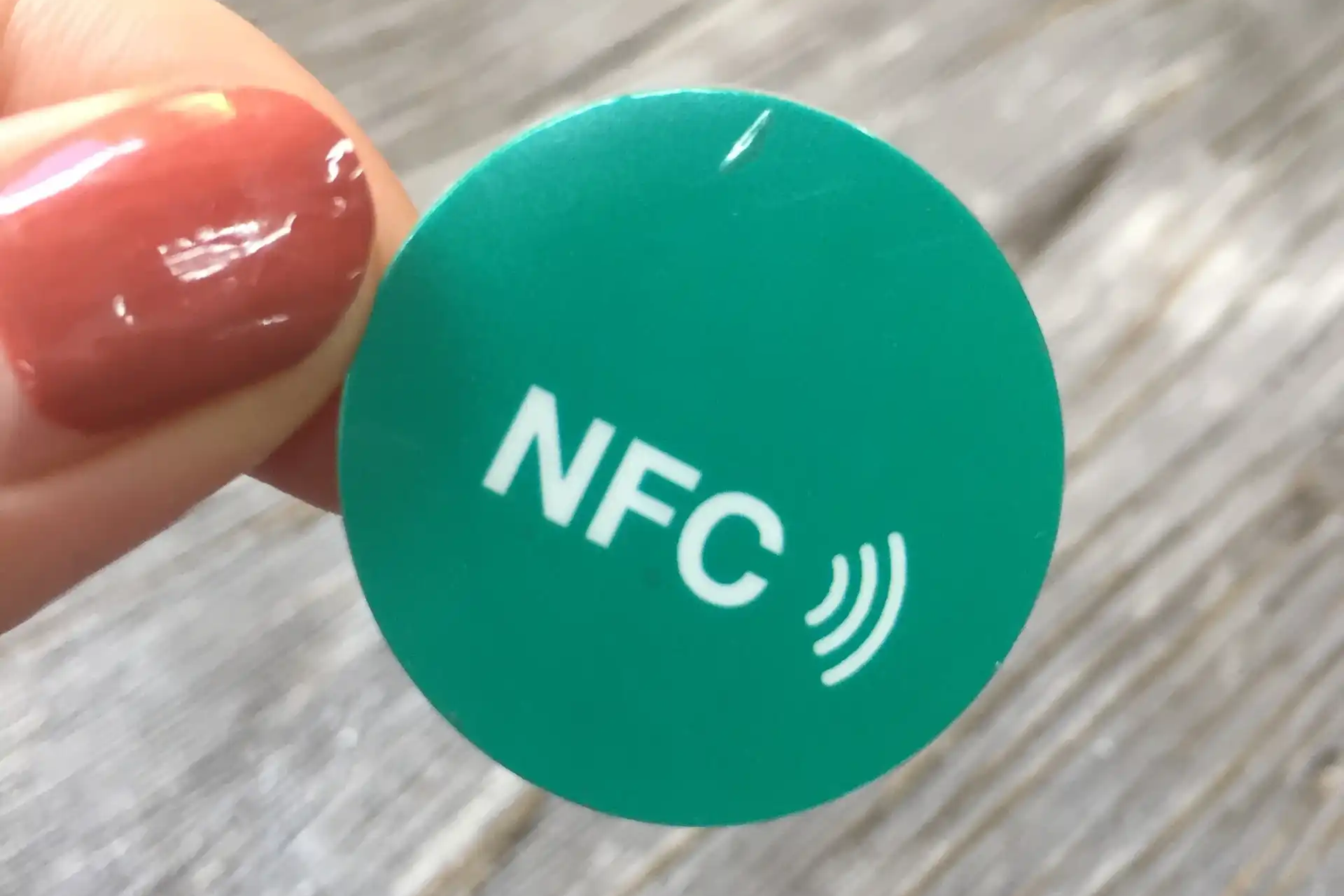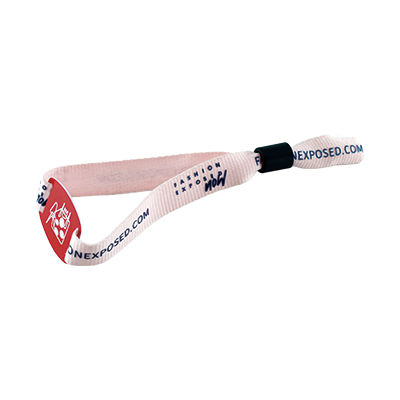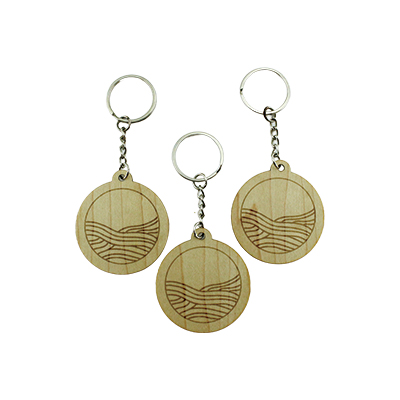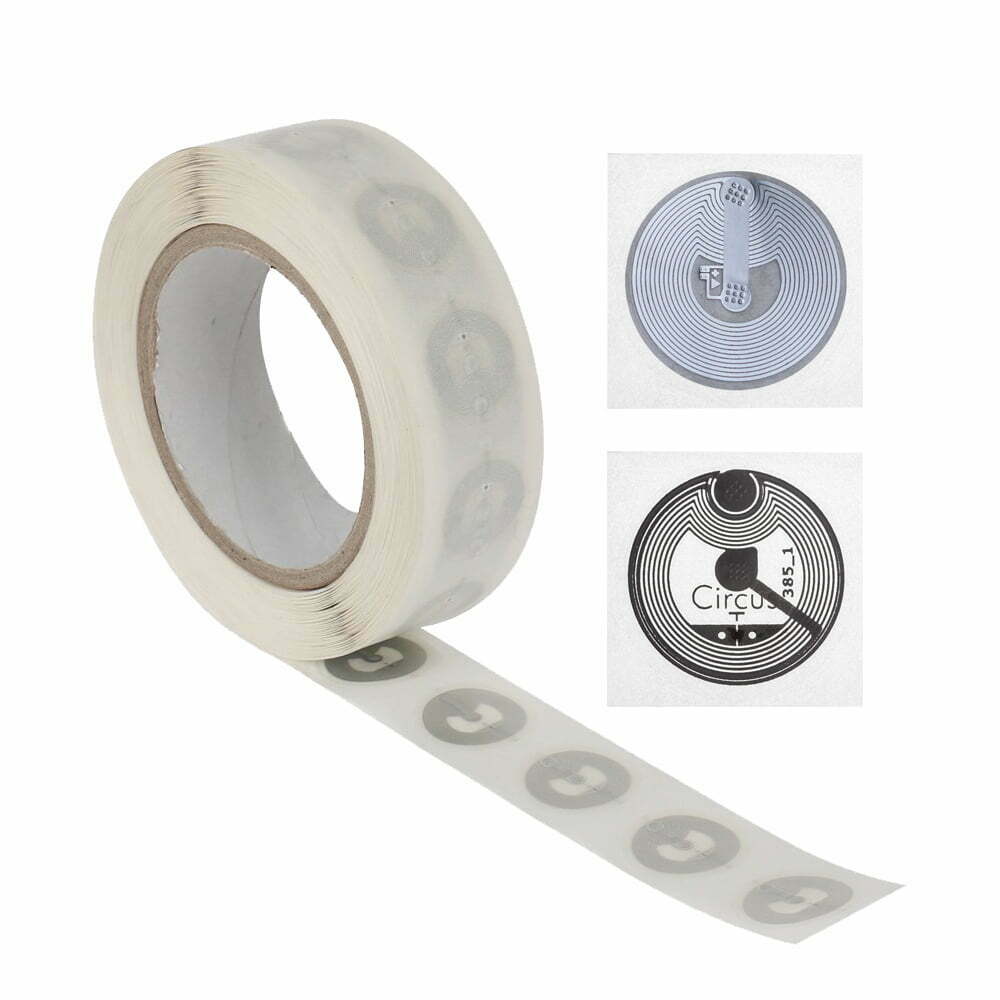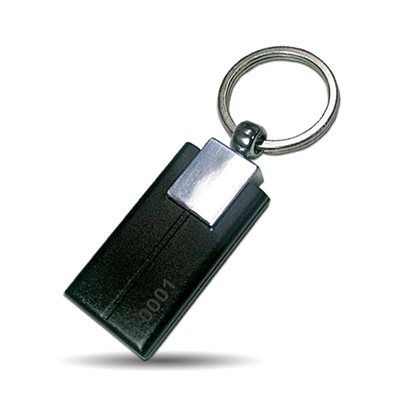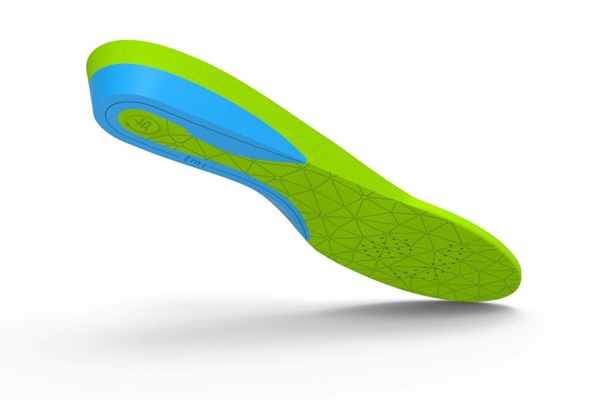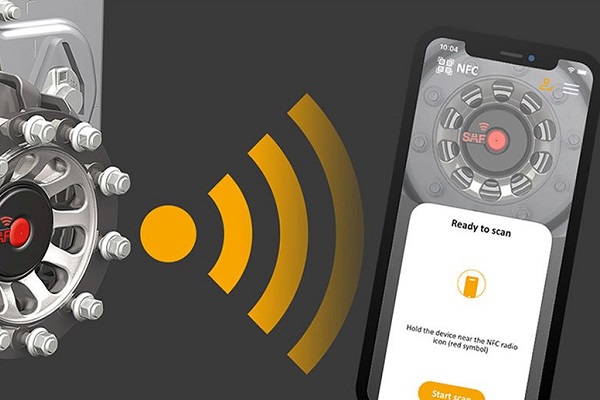Autocollants NFC sont petits, porteurs de données collables basés sur une communication sur le terrain proche (NFC) technologie. Il se compose généralement d'une puce mince et d'une antenne entourant la puce, et par le principe de l'induction électromagnétique, Il effectue une interaction de données sans contact avec les appareils compatibles NFC. Autocollants NFC sont minces et légers, et peut être facilement apposé à la surface d'une variété d'objets, comme les téléphones mobiles, ordinateurs portables, portefeuilles et ainsi de suite, Pour fournir aux utilisateurs des fonctions de stockage et d'interaction pratiques.
Quels sont les types d'autocollants NFC?
Les autocollants NFC peuvent être divisés en différents types en fonction des différentes méthodes de traitement, Matériaux et fonctions:
Incrustation humide: Ceci est une forme semi-finie d'autocollant NFC, qui a déjà toutes les fonctions de la balise, La surface est transparente et la bobine d'antenne peut être vue directement, Convient pour s'en tenir à la surface du produit ou se fixer à l'intérieur de l'élément.
Étiquettes ordinaires: Fabriqué à partir d'inclays secs ou d'inclays humides puis composites par surface, avec une variété de matériaux de surface et de motifs personnalisables, qui sont généralement collés sur la surface extérieure de l'élément pour la balayage direct.
Étiquette fragile: Il a l'effet de l'anti-transfert, et ne peut plus être complètement retiré après avoir été attaché à la surface de l'élément, Sinon, l'étiquette sera invalide, ce qui convient à une utilisation dans le domaine de la maîtrise des marchandises.
Étiquettes anti-métal: Une couche de matériau absorbant est laminée à l'arrière des étiquettes ordinaires, afin qu'il puisse fonctionner normalement sur la surface métallique sans être interféré par le métal.
Étiquettes imprimées: L'antenne est directement imprimée sur le substrat avec de l'encre conductrice, qui convient à la certification anti-contrefaçon de documents, certificats et produits.
Étiquette époxy: Une couche de colle époxy douce transparente est laminée à la surface, qui non seulement protège la surface mais est également belle et généreuse, Convient pour un usage personnel.
Paramètres communs des autocollants NFC
Les paramètres communs des autocollants NFC incluent principalement:
- Fréquence de fonctionnement: généralement 13,56 MHz, qui est la fréquence de fonctionnement standard pour la technologie NFC.
- Capacité de stockage: varie en fonction du type de puce, mais est généralement suffisant pour stocker des données telles que les mots de passe WiFi et les informations d'accès à la carte.
- Distance de communication: La technologie NFC a une courte distance de communication, généralement à l'intérieur 10 centimètres, Assurer la sécurité et la fiabilité de la transmission des données.
- Température de fonctionnement: Les autocollants NFC peuvent généralement fonctionner normalement dans une certaine plage de température, comme -20 ° C à 70 ° C, s'adapter à diverses conditions environnementales.
La fonction de l'autocollant NFC
Les autocollants NFC ont une variété de fonctions, incluant principalement:
- Serrure électronique analogique: En écrivant les informations sur la carte d'accès, La porte peut être ouverte sans carte.
- Connexion à une touche: Si vous écrivez le mot de passe wifi, Le téléphone se connectera automatiquement au WiFi lorsqu'il sera proche.
- Déclencheur de l'interrupteur: Il peut être utilisé pour contrôler le commutateur des appareils domestiques, comme les lumières intelligentes qui s'allument en appuyant sur un bouton.
- Fonction de paiement: Bind Bank Card ou Payment Plateforme pour obtenir un paiement sans espèces et pratique.
- Transmission d'informations: Texte, cartes de visite, Les URL et autres informations peuvent être écrites pour que d'autres appareils NFC à lire.
Scénarios d'application des autocollants NFC
Les autocollants NFC ont un large éventail de scénarios d'application et couvrent de nombreux aspects de la vie quotidienne:
- Intelligence intérieure: Collez-le sur la porte d'entrée, table basse, entrée, etc., Pour réaliser des fonctions telles que la connexion Wi-Fi automatique, projection d'écran
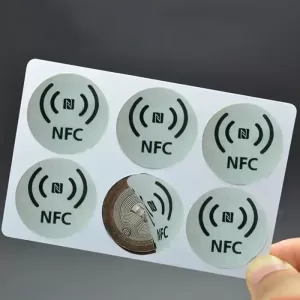 TV, et rapports de sécurité, et améliorer le niveau d'intelligence domestique.
TV, et rapports de sécurité, et améliorer le niveau d'intelligence domestique. - Système de contrôle d'accès: Remplacez les cartes d'accès physiques pour l'entrée sans carte et la sortie, Améliorer la commodité et la sécurité.
- Transports en commun: Les bus et les métros de certaines villes prennent en charge la technologie NFC, et les autocollants NFC peuvent être utilisés comme cartes de bus ou cartes de métro.
- Scénario de paiement: Dans des magasins tels que les supermarchés et les centres commerciaux, Le paiement peut être achevé en plaçant le téléphone mobile près de l'autocollant NFC, Simplifier le processus d'achat.
- Produit anti-contrefaçon: Des types spéciaux d'autocollants NFC tels que des étiquettes fragiles et des étiquettes anti-métal peuvent être utilisées pour les produits anti-contrefaçon et la traçabilité pour protéger les droits et intérêts des consommateurs.
En bref, Autocollants NFC, En tant que produit technique qui intègre la commodité, pratique et intelligence, changent progressivement notre style de vie. Avec l'avancement continu de la technologie et l'expansion continue des scénarios d'application, Les autocollants NFC joueront sûrement un rôle plus important à l'avenir.

